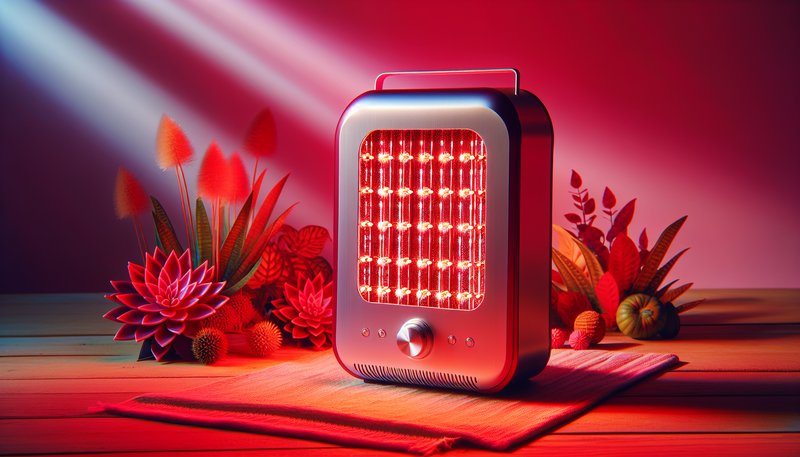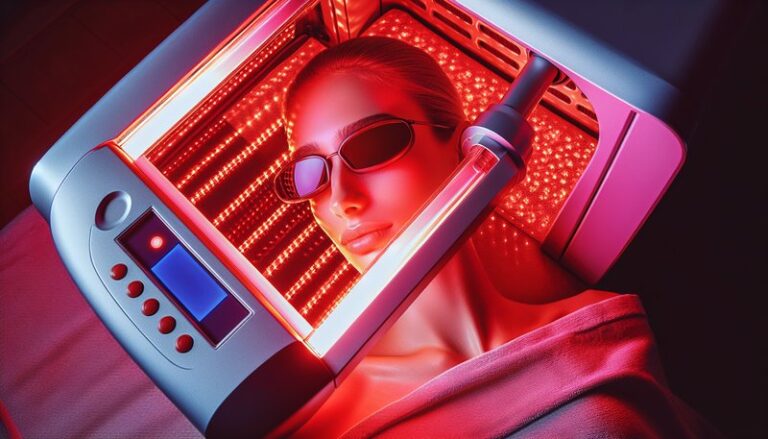Is Phototherapy The Same As Red Light Therapy?
Is Phototherapy the Same As Red Light Therapy?
Have you ever wondered if phototherapy and red light therapy are the same? With an increasing interest in non-invasive treatments for various skin and health conditions, it’s crucial to understand the differences and similarities between these two therapeutic approaches.
This article will explore the definitions, benefits, and important considerations regarding phototherapy and red light therapy. By the end, you’ll have a clearer understanding of whether they are interchangeable or distinct modalities.
Key Takeaways
- Phototherapy encompasses a broader range of light-based treatments, while red light therapy is a specific type of phototherapy.
- Both therapies have unique benefits for various skin conditions and wellness applications.
- Understanding your specific needs can help determine which therapy may be most suitable for you.
What is Phototherapy?
Phototherapy is a medical treatment that uses specific wavelengths of light to treat various skin conditions and other health issues. This approach can involve ultraviolet (UV) light, blue light, and red light, each serving different therapeutic purposes.
In a clinical setting, phototherapy is often employed to treat conditions such as psoriasis, eczema, acne, and seasonal affective disorder (SAD). The process usually takes place under medical supervision, where patients are exposed to light sources for prescribed periods.
Types of Phototherapy
- UV Phototherapy: Utilizes ultraviolet light to diminish skin conditions like psoriasis.
- Blue Light Therapy: Targets acne-causing bacteria through specific blue wavelengths.
- Red Light Therapy: A subset of phototherapy, known for its anti-inflammatory and healing properties.
What are the Benefits of Phototherapy?
Phototherapy presents numerous advantages, particularly for those suffering from chronic skin conditions or other health issues.
Skin Condition Management
Phototherapy can effectively alleviate symptoms associated with skin disorders, leading to clearer skin and improved quality of life.
Non-Invasive Treatment Option
Many forms of phototherapy offer a non-invasive alternative compared to medications or surgical treatments, minimizing side effects and recovery time.
Mental Health Enhancements
Light therapy, particularly in the case of seasonal affective disorder, can significantly improve mood and energy levels, helping to combat the effects of winter blues.
Additional Benefits
- Stimulates collagen production in the skin.
- Reduces inflammation and promotes healing.
- Can provide ongoing maintenance for chronic conditions.
Is it Possible to Use Phototherapy at Home?
With the advent of home-use devices, many people wonder if they can safely conduct phototherapy treatments themselves.
Some home phototherapy units exist, but proper guidance and understanding of usage are essential. Always consult with a healthcare provider before starting any self-treatment.
What are the Advantages of Home Phototherapy?
- Convenience: Allows for treatment at your own pace and schedule.
- Cost-Effectiveness: Can reduce the long-term costs of in-office treatments.
- Privacy: Offers a more private setting for personal care.
What are the Disadvantages of Home Phototherapy?
- Limited Efficacy: Home devices may not deliver the same dosage and effectiveness as professional machines.
- Safety Risks: Incorrect usage can lead to burns or other skin damage without supervision.
- Lack of Immediate Medical Support: Should complications arise, immediate professional help may not be available.
What are the Things to Consider Before Using Phototherapy at Home?
Before embarking on home phototherapy, consider the following factors.
Read our discussion on Does Red Light Therapy Worsen Hyperpigmentation?
Type of Device
Ensure that the device is appropriate for your intended treatment and approved for home use.
Discover the complete guide Can Red Light Therapy Promote Cancer Growth?
Skin Sensitivity
Understand your skin type and any sensitivities you may have to specific wavelengths of light to avoid adverse reactions.
Consult Professional Guidance
Always consult a dermatologist or healthcare professional to establish your appropriate treatment plan and identify potential risks.
Additional Considerations
- Adhere to manufacturer’s guidelines for safe usage.
- Monitor skin response to treatments and adjust frequency as needed.
- Be aware of potential interactions with skincare products.
What are the Alternatives to Phototherapy?
There are various alternatives for those seeking treatments for skin conditions or health benefits.
Topical Treatments
Creams and gels containing corticosteroids or retinoids can effectively manage skin conditions without light exposure.
Oral Medications
Certain medications, including anti-inflammatory drugs, can address symptoms from within the body.
Laser Therapies
Laser treatments provide targeted solutions for specific skin issues, often yielding quicker results.
Other Alternatives
- Acupuncture
- Chemical peels
- Microdermabrasion
Conclusion: Is it Recommended to Use Phototherapy?
Overall, phototherapy can be a very effective treatment for various conditions, including skin issues and mental health challenges. While home devices offer convenience, professional oversight is recommended for optimal safety and effectiveness. Understanding your specific situation, including skin health and comfort level, will help you decide whether to pursue phototherapy or consider alternatives.
Frequently Asked Questions
Is red light therapy a part of phototherapy?
Yes, red light therapy is a specific type of phototherapy that uses red wavelengths of light to stimulate healing, reduce inflammation, and enhance skin health.
How long does a typical phototherapy session last?
A typical session can last anywhere from several minutes to an hour, depending on the technology used and the condition being treated.
Can anyone use phototherapy?
While many people can benefit from phototherapy, it’s important to consult with a healthcare professional to ensure it’s safe based on individual health conditions and skin types.
Are there side effects associated with phototherapy?
Some patients may experience side effects like skin irritation, redness, or, in rare cases, burns. Discuss any concerns with a healthcare provider before beginning treatment.
How do I know if phototherapy is right for me?
Consulting with a dermatologist or healthcare provider will help tailor the treatment based on your specific skin condition, overall health, and treatment goals.






